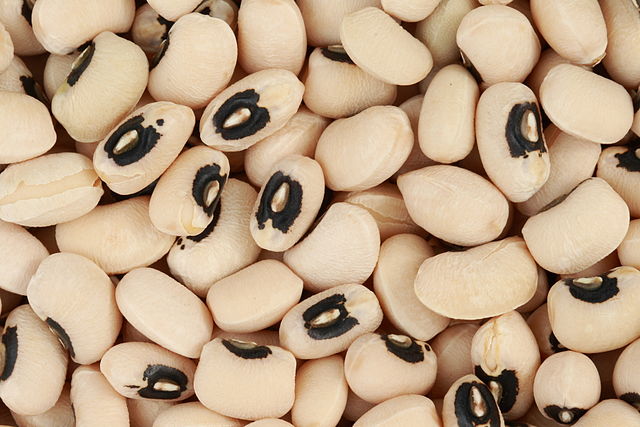Ghana’s first cowpea biotech triumph has emerged after the government approved a new genetically modified (GMO) cowpea variety for cultivation. The “Songotra T cowpea” by the Council for Scientific and Industrial Research-Savanna Agricultural Research Institute (CSIR-SARI) gained this distinction on July 25, 2024.
The pod borer-resistant (PBR) cowpea (Vigna unguiculata) is the first GMO crop that the West African Nation has ever developed.
Its major score is resistance to the pod borer (Maruca vitrata), an insect that preys on peas and reduces yields by 80%.
The new black-eyed pea variety is also quite nutritious and could therefore come handy to small-scale farmers. CSIR’s director Prof. Paul Bosu said as much during the July 25, 2024 launch ceremony, by citing its food security importance.
Fostering Cowpea Biotech in Ghana
The novel cowpea aligns to a technology-driven agricultural policy by the government of Ghana and private partnerships.
So committed are stakeholders to this agricultural outlook that it has taken CSIR-SARI researchers 12 years to develop the cultivar.
Another organization into agritech in Ghana and which oversaw the development of the variety is the African Agriculture Technology Trust (AATF). During the launch, AATF’s Chairman Prof. Aggrey Ambali promised better livelihoods for family growers who can now maximize production, pest-free.
The cowpea’s developing also acquired an international face through the sponsorship of the United States Agency for International Development (USaid).
Cowpea Biotech and Food Safety
It is also remarkable that “Songotra T” has passed into the food chain without biosafety concerns, due to decade-long rigorous tests.
The National Biosafety Authority passed it as safe human food and animal feed prior to its latest launch.
Since then, successful cultivation trials have taken place in the Ghanaian north, which is a major legume-growing belt.
Pricing
Now what remains is to monitor how the PBR cowpea overcomes the price huddle, which often plagues rural cowpea accessibility.
Though black-eyed peas sell less than animal feed cost, they are usually a little dearer than other grains in Ghana. In October 2020, for example, while maize cost $0.20 a kg wholesale, cowpea raked in $0.72 a kg.
Between late 2021 and early 2022, the price hiked by 11%, which made waakye, a cowpea-rich meal, expensive.
In short, Ghana’s cowpea biotech is not only making history for earning lab crop cultivation rights, but it is fostering food security. To learn more about cowpea facts in general, below are national statistics.
Ghana Cowpea Statistics
Ghana is among a quintet of top cowpea-producing nations in Sub-Saharan Africa and the world. In 2022, production reached 319,960 tonnes the fourth highest globally. All the top three leaders were neighbors Nigeria at 4.133 million tonnes, Niger at 2.866 million tonnes and Burkina Faso at 829,204 tonnes. Even before the 2022 peak, Ghana’s production had been increasing, notably in 2018 (at 237,000 tonnes) and 2019 (254,000 tonnes) and 2020 (263,000 tonnes). Ghana has also seen consumption sometimes outstrip production, a trend that has led to rapid acreage increment. In 2018, the area under cowpeas was 157,000 hectares, which increased to 169,000 hectares in 2019.
How nutritious is the cowpea?
Cowpeas are highly nutritious in protein at 24 to 26% per 100 g. They also harbor dietary fiber at 11% per 100 g and potassium at 1112 milligrams per 100 grams. Lipids are low at 2% while the protein part contains important amino acids.
How high is cowpea consumption in Ghana?
According to a regional ACDI-VOCA survey of 2020, 52.17% of households eat cowpea meals at least once weekly. This once-a-week rate climbs to 63.33% in households that cultivate the crop. In per capita terms, consumption estimates for the 2022-23 year were at 10 kg per person per year. This estimate by the U.S. Department of Agriculture (USDA) also put a 2022-23 total consumption forecast at 325,000 tonnes. In comparison, Nigeria, Niger, Mali and Burkina Faso consumed about 23 kg per person per year of cowpeas in 2000.
Does Ghana import cowpeas?
Though imports have reduced in the 2000s, Ghana used to order some 10,000 tonnes of cowpeas per year in the 1990s.
